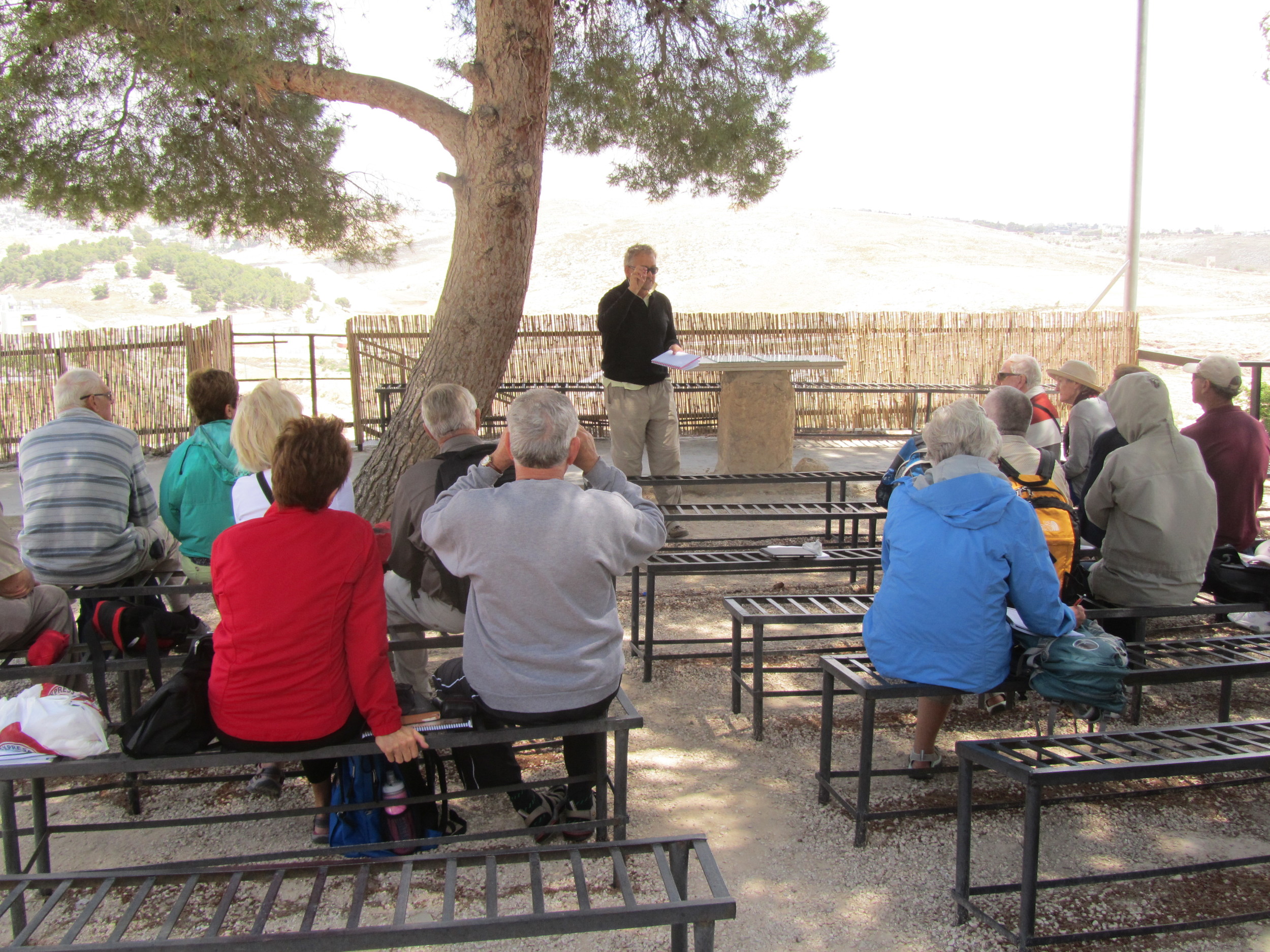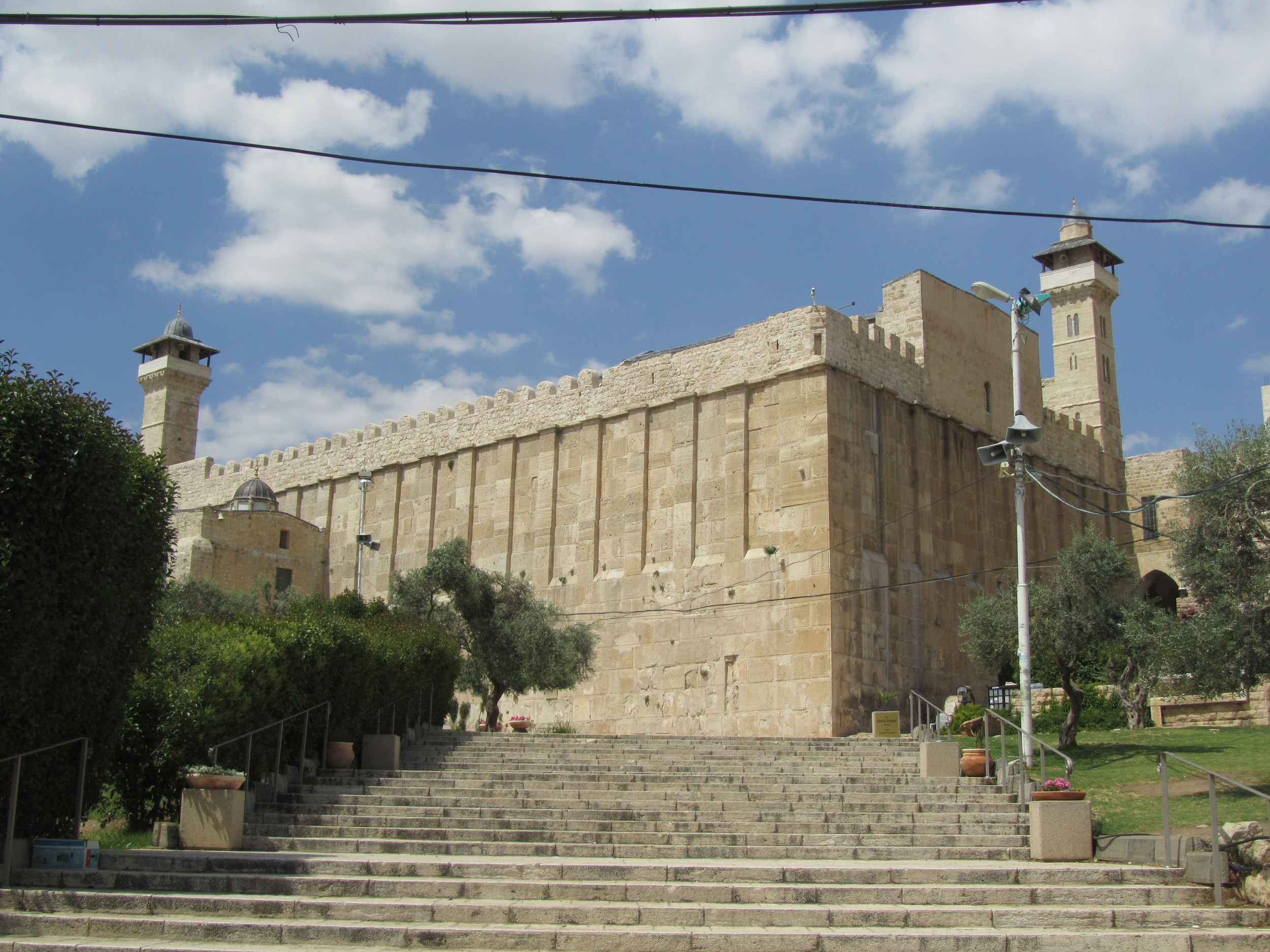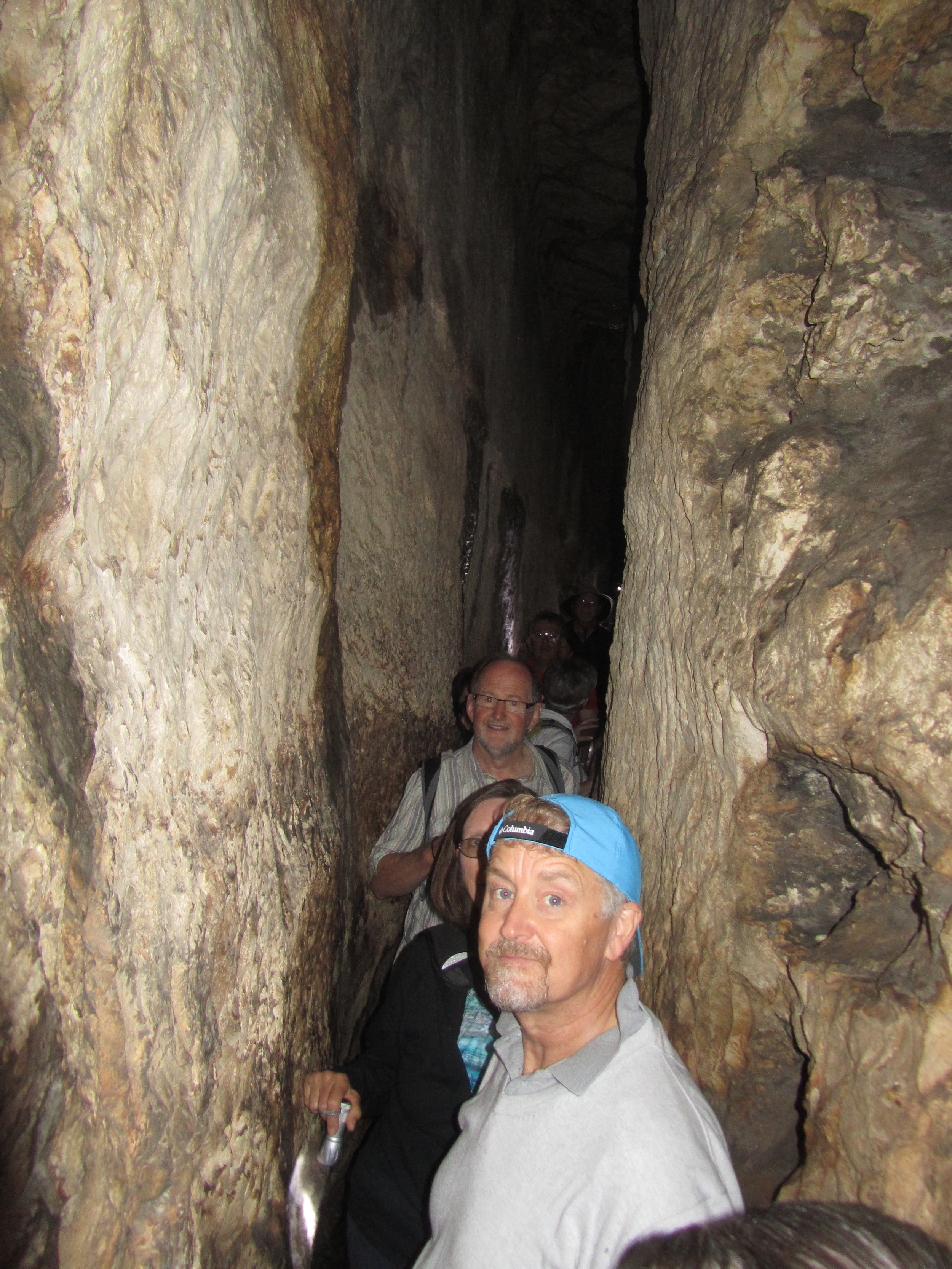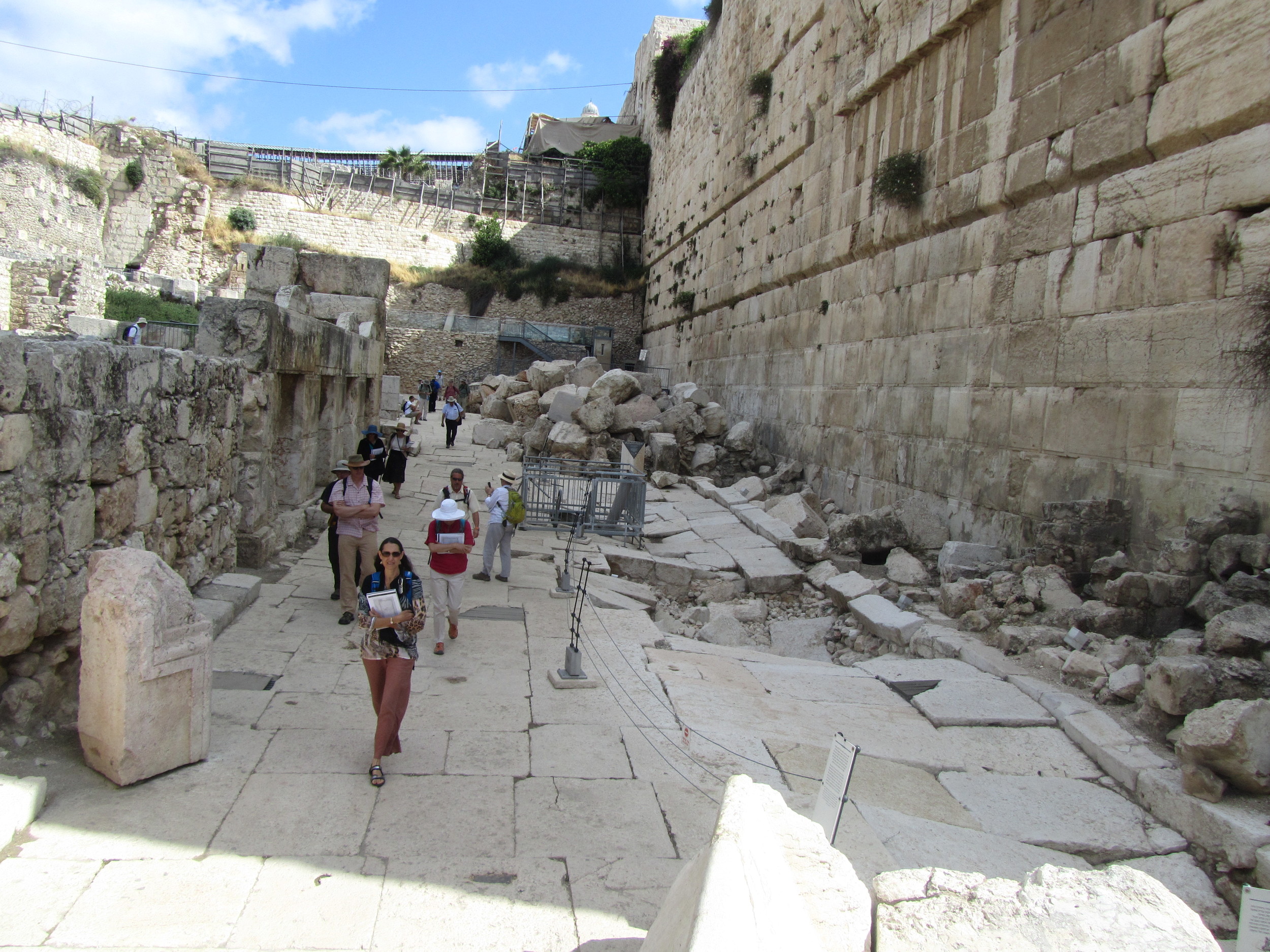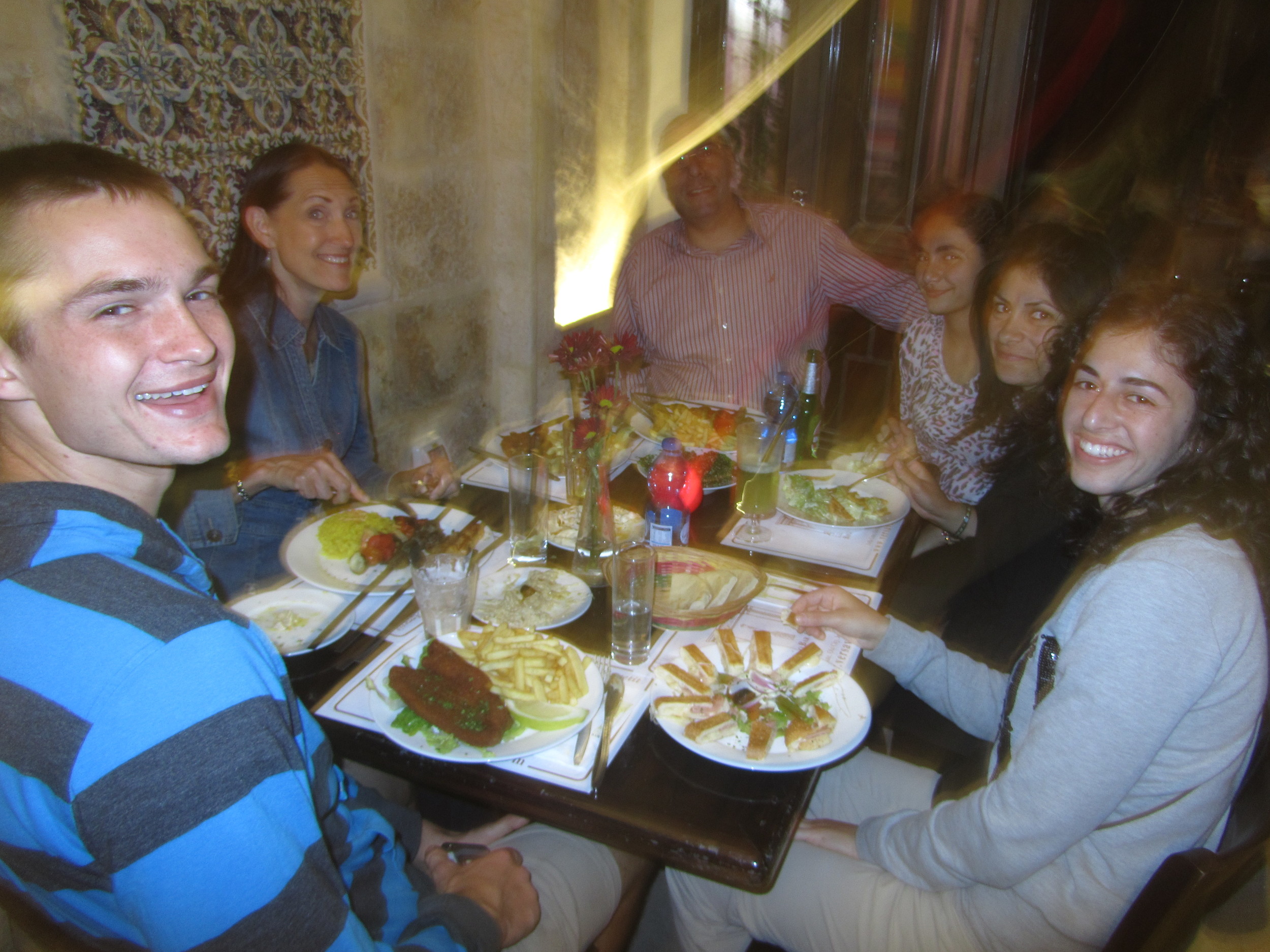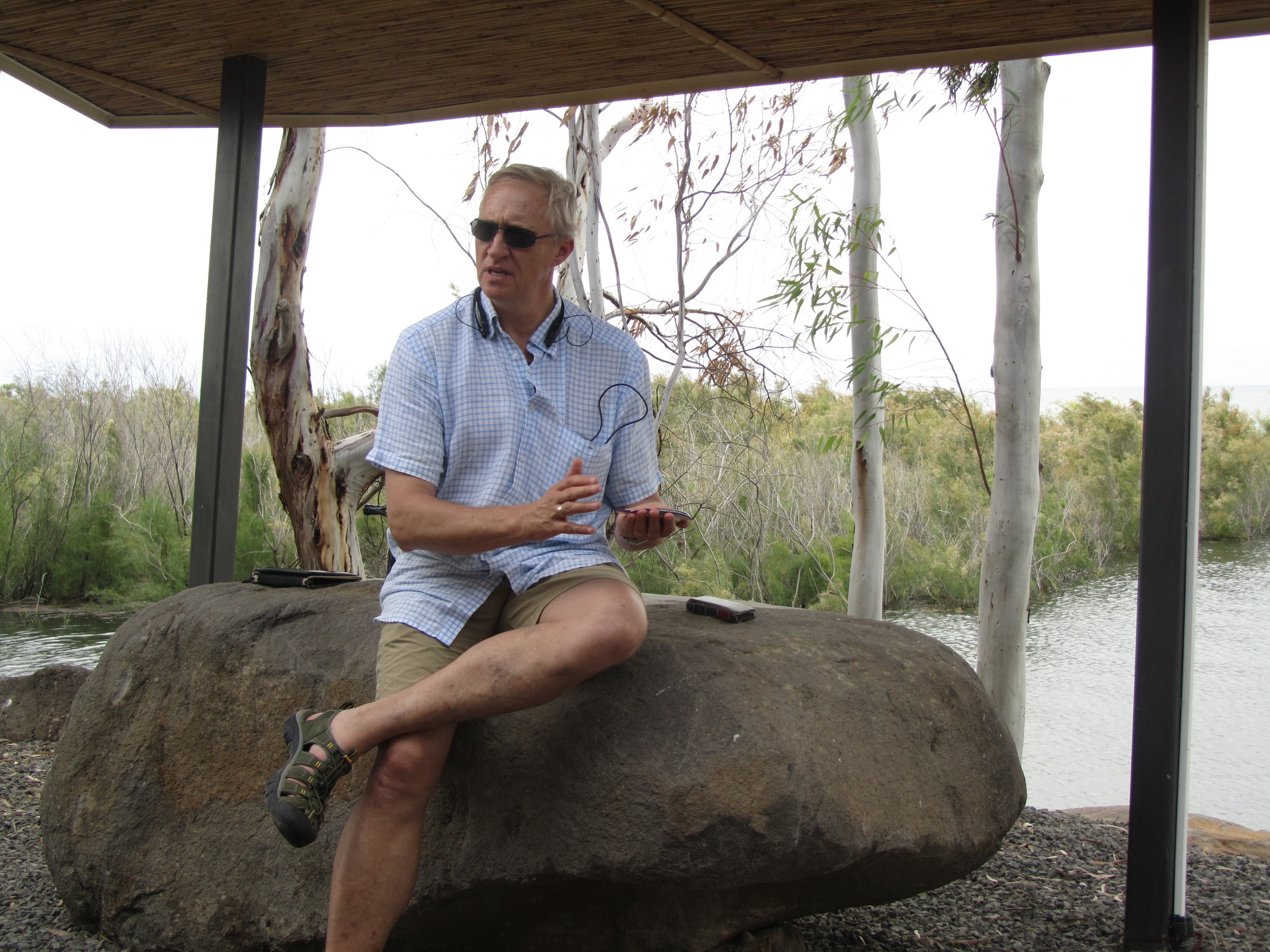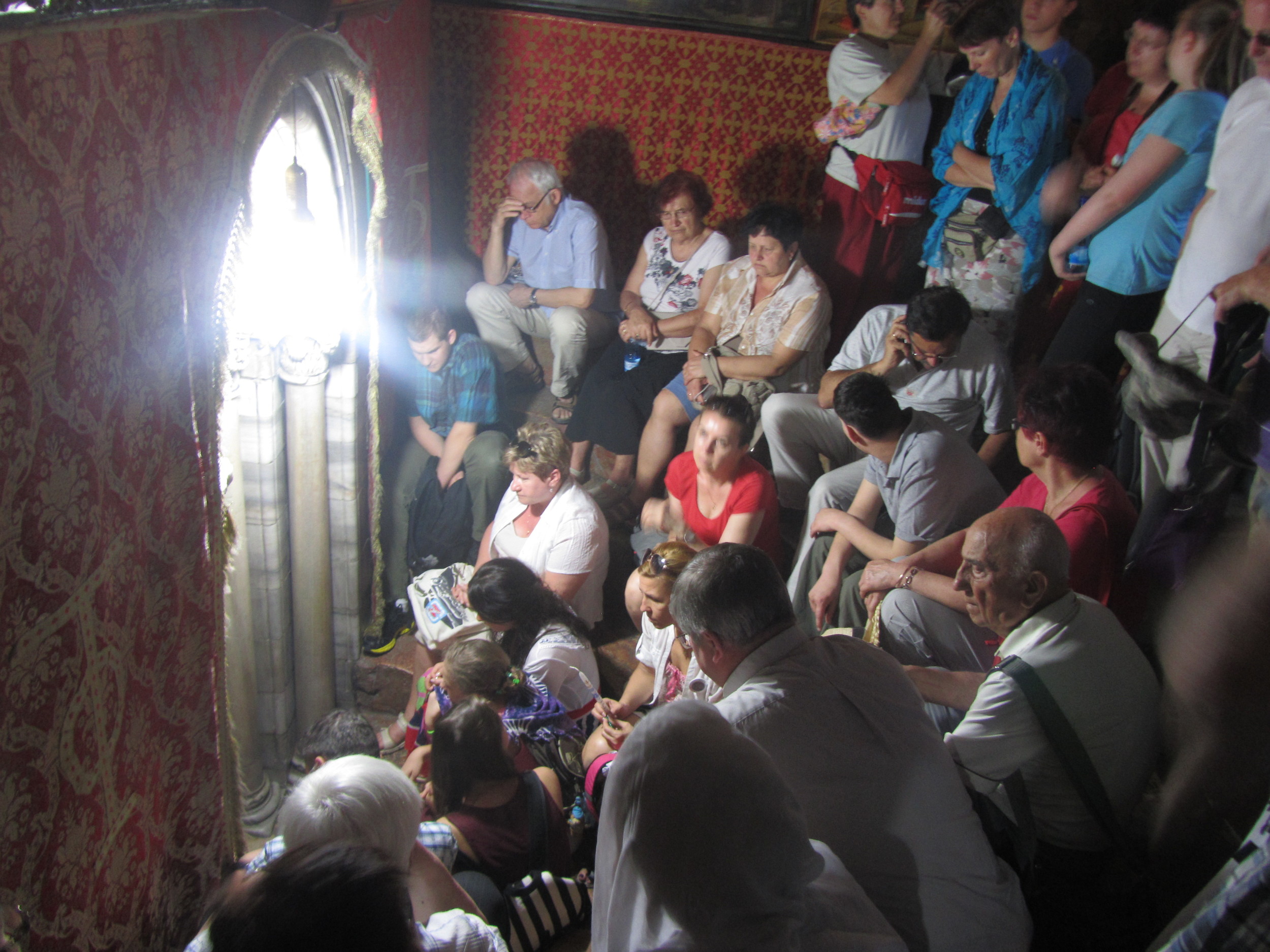We began this morning, as we do each morning, with time in the Word and in prayer preparing for what we will be seeing and doing in our travels that day. Here at the Tabgha Pilgerhaus we have a fantastic view over the beautiful Sea of Galilee!
Enjoying Our Morning Quiet Time Overlooking the Sea of Galilee
Our first stop of the day was the Church of the Beatitudes which is the traditional location for Jesus' Sermon on the Mount. It's octagonal design reflects each of the eight beatitudes Jesus described.
My Beautiful Bride at the Church of the Beatitudes
After visiting the church we found a shady spot to read the Beatitudes and reflect together on the upside-down values of the Kingdom that challenge our worldly assumptions about the "good life."
Our Group Reflecting on the Mount of Beatitudes
Just down the hill from there we visited the Church of the Multiplication of Loaves and Fishes, which is a beautiful reconstruction of a fifth century Byzantine church built on the traditional location where Jesus performed the miracle of the feeding of the five thousand. Part of the amazing mosaics that covered the floor of this church included the famous "Tabgha Mosaic" which depicts the five loaves and two fish of the miracle. They are placed just in front of the ancient stone which was remembered as the table where Jesus blessed and broke the bread.
The Ancient Rock and Mosaic Marking the Feeding of the Five Thousand
At each of the churches we visit we cross paths with other Christian pilgrims from all around the world who are seeking Jesus and expressing their faith according to their own culture. Lighting candles as a symbol of prayer is one of the traditions I have come to appreciate.
Two Pilgrims Light Candles in the Church of the Multiplication of Loaves and Fishes
Even more moving than visiting ancient churches is gathering to worship as the church of today. We were blessed to gather at the lovely lakeside chapel in Tabgha where we reflected on the meaning of this miracle for us today and then joined in sharing Communion together as a group.
Malcolm Potts Preaching on the Shore at Tabgha
Once again God met us in a powerful way and fed our souls with new insights and growing faith. It is such a blessing to share this spiritual journey with these wonderful brothers and sisters from Australia and across the US. We all agree we are quickly becoming an extended spiritual family!
The Outdoor Chapel at Tabgha
After a full morning of great experiences, we returned to our lovely guesthouse for a tasty lunch and a chance to refresh. After lunch some of us headed back out for a trip to the top of the Cliffs of Arbel and a panoramic view of the north end of the lake. Looking forward to more adventures tomorrow ....
Another Great Meal Overloking the Lake in the Dining Room of Tabgha Pilgerhaus






























